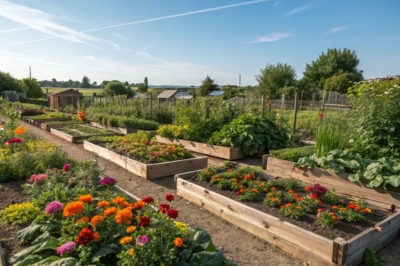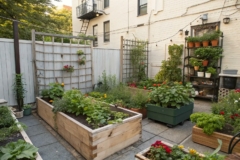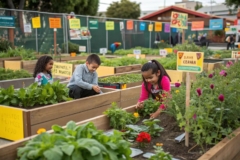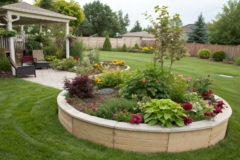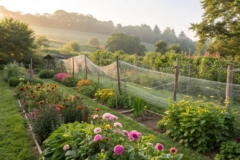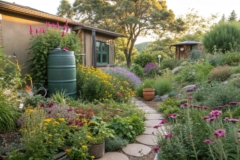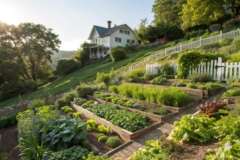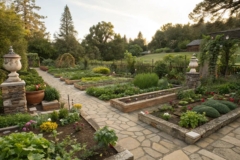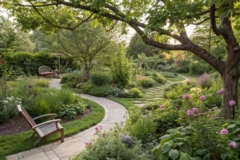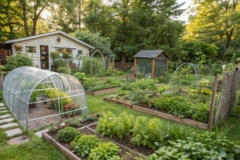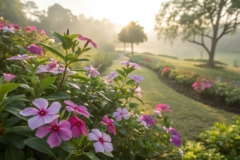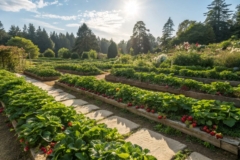1. Create a No-Dig Garden
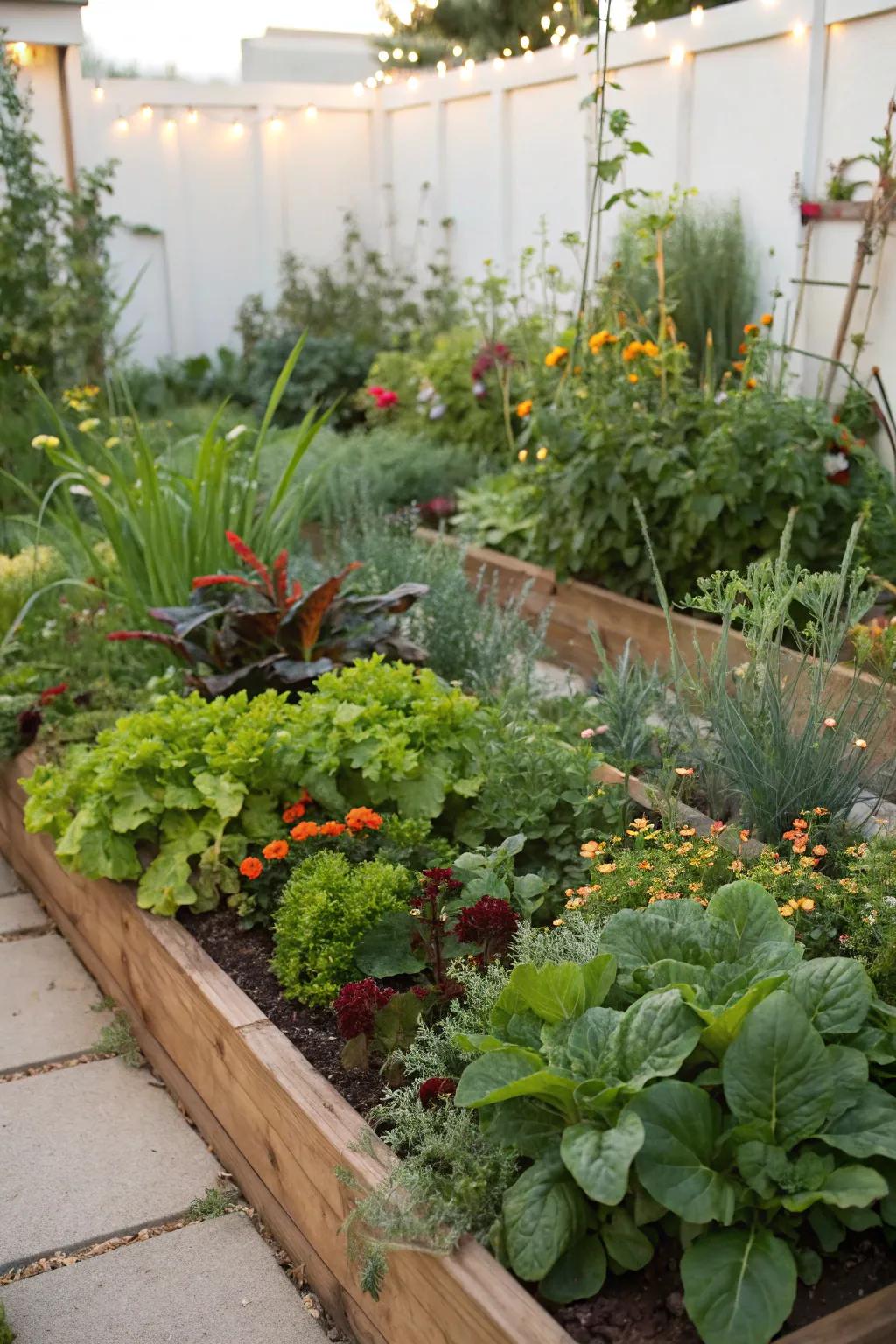
A no-dig approach can save time and improve soil health. I’ve found this technique less labor-intensive and more rewarding in the long run.
Check if these fit your needs:
- Raised Garden Bed Kit: Elevate your gardening experience with easy-to-assemble raised beds, perfect for no-dig setups.
- Organic Compost: Improve soil health and plant growth by using rich, organic compost in your no-dig garden.
- Heavy Duty Garden Mulch: Use quality mulch to suppress weeds and retain soil moisture in your no-dig garden.
2. Grow a Variety of Crops
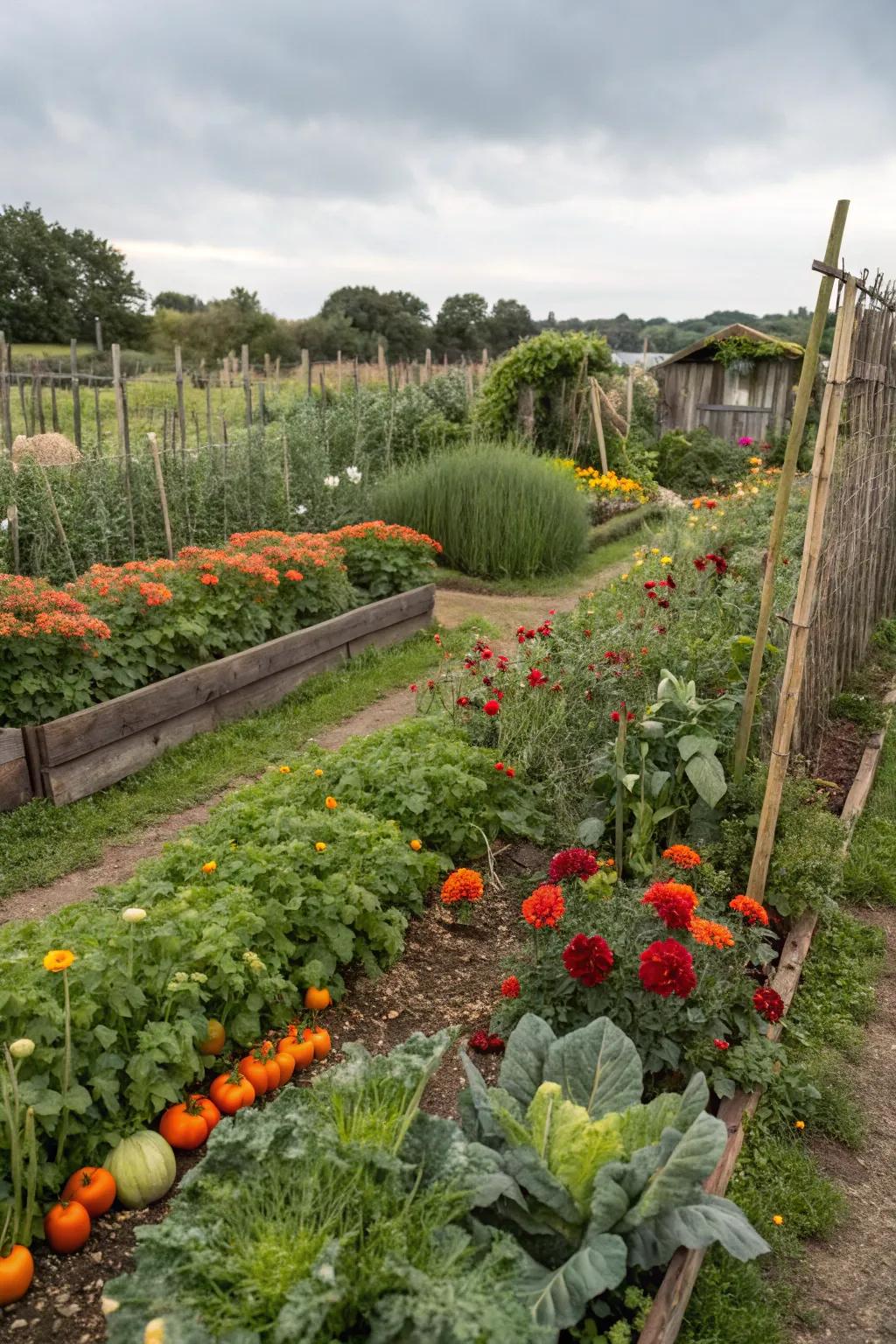
Mixing up your plant selection is like painting with a full palette of colors. I always plant a mix of veggies and flowers for a vibrant and productive allotment.
Might be a good match:
- Vegetable Seed Variety Pack: Start your colorful allotment with a diverse selection of easy-to-grow vegetable seeds today.
- Flower Seed Mix: Enhance your garden’s beauty by planting a mix of vibrant and hardy flower seeds now.
- Raised Garden Bed Kit: Organize your crops efficiently with an easy-to-assemble raised garden bed for healthy plant growth.
3. Protect with Netting and Covers
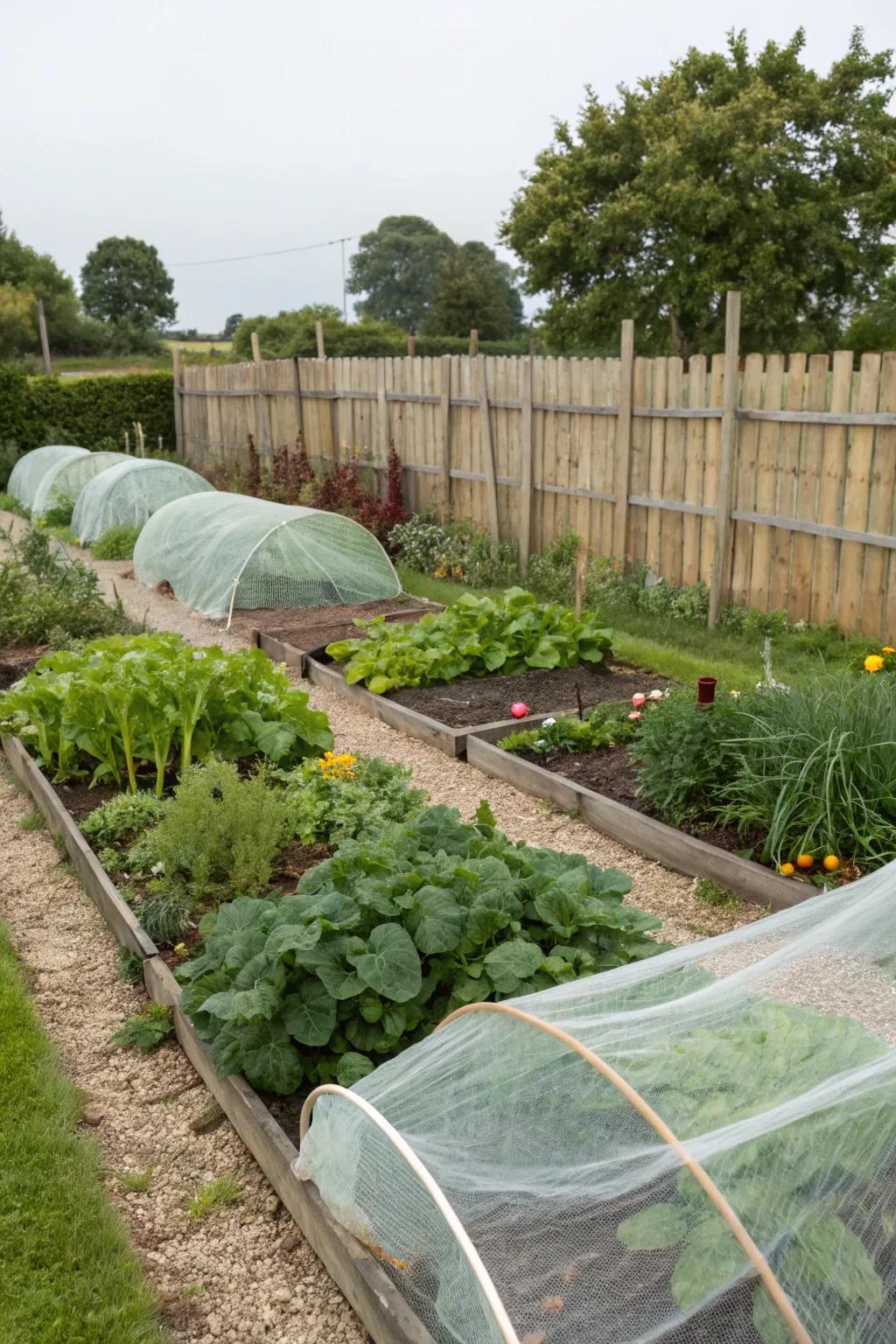
Use netting or covers to shield plants from pests and harsh weather. In my allotment, this simple step has saved many crops.
You might give these a try:
- Garden Plant Protection Netting: Shield your crops from pests and harsh weather with durable garden protection netting.
- Raised Bed Garden Covers: Safeguard your vegetables with easy-to-install raised bed garden covers, ensuring optimal growth.
- All-Purpose Garden Tunnel Hoops: Create a protective tunnel with adjustable hoops to guard against pests and weather threats.
4. Craft Your Own Raised Beds
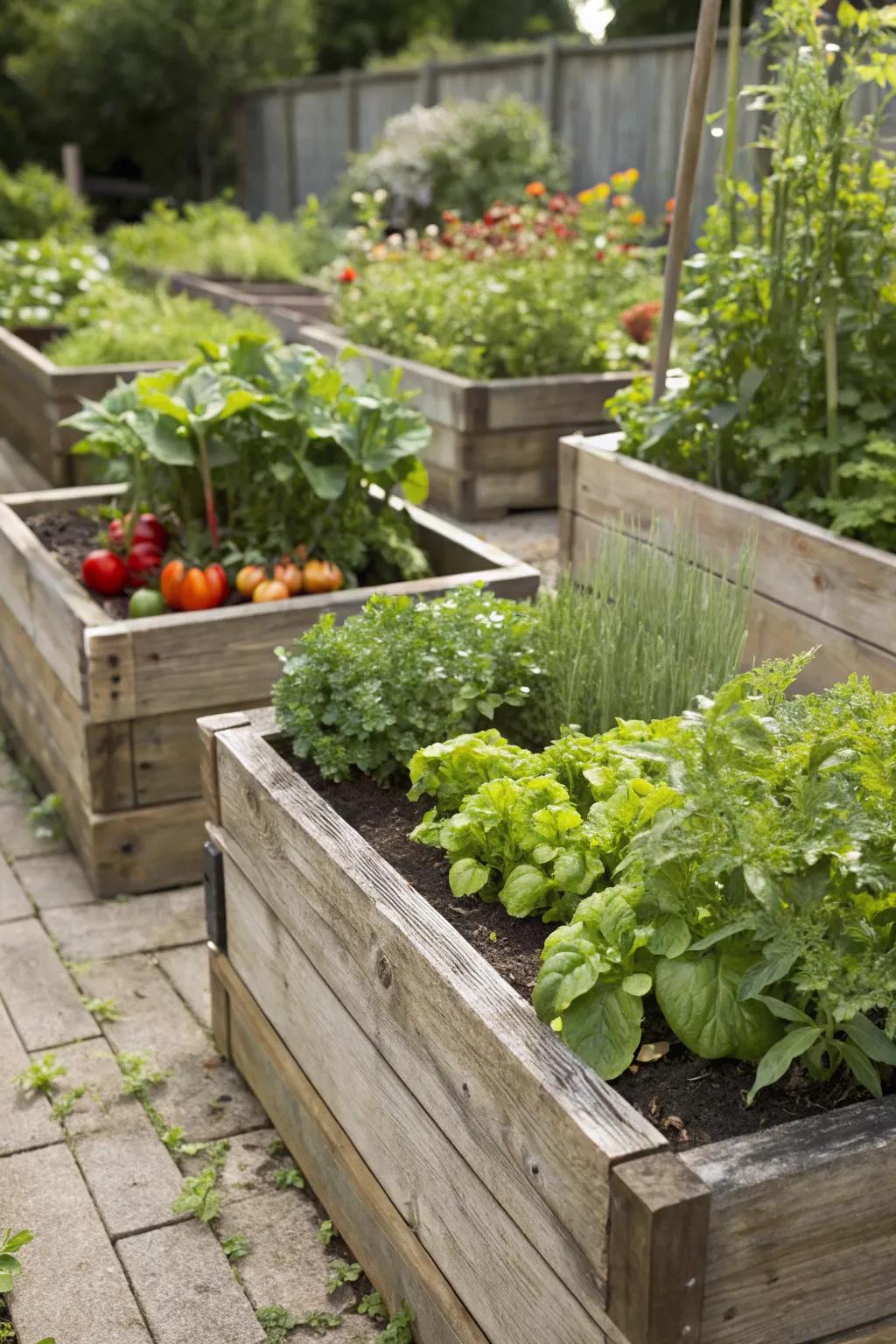
Raised beds are a game-changer for any allotment, making it easy to manage soil and organize your plants. I love using reclaimed wood for a rustic feel that blends beautifully with nature.
Give these a look:
- Reclaimed Wood Planks: Use reclaimed wood planks to build eco-friendly raised beds with a rustic charm.
- Raised Bed Corner Brackets: Secure your raised beds with durable metal brackets for a sturdy and lasting structure.
- Garden Soil Mix: Fill your raised beds with nutrient-rich soil mix for healthier, flourishing plants.
5. Use Recycled Materials
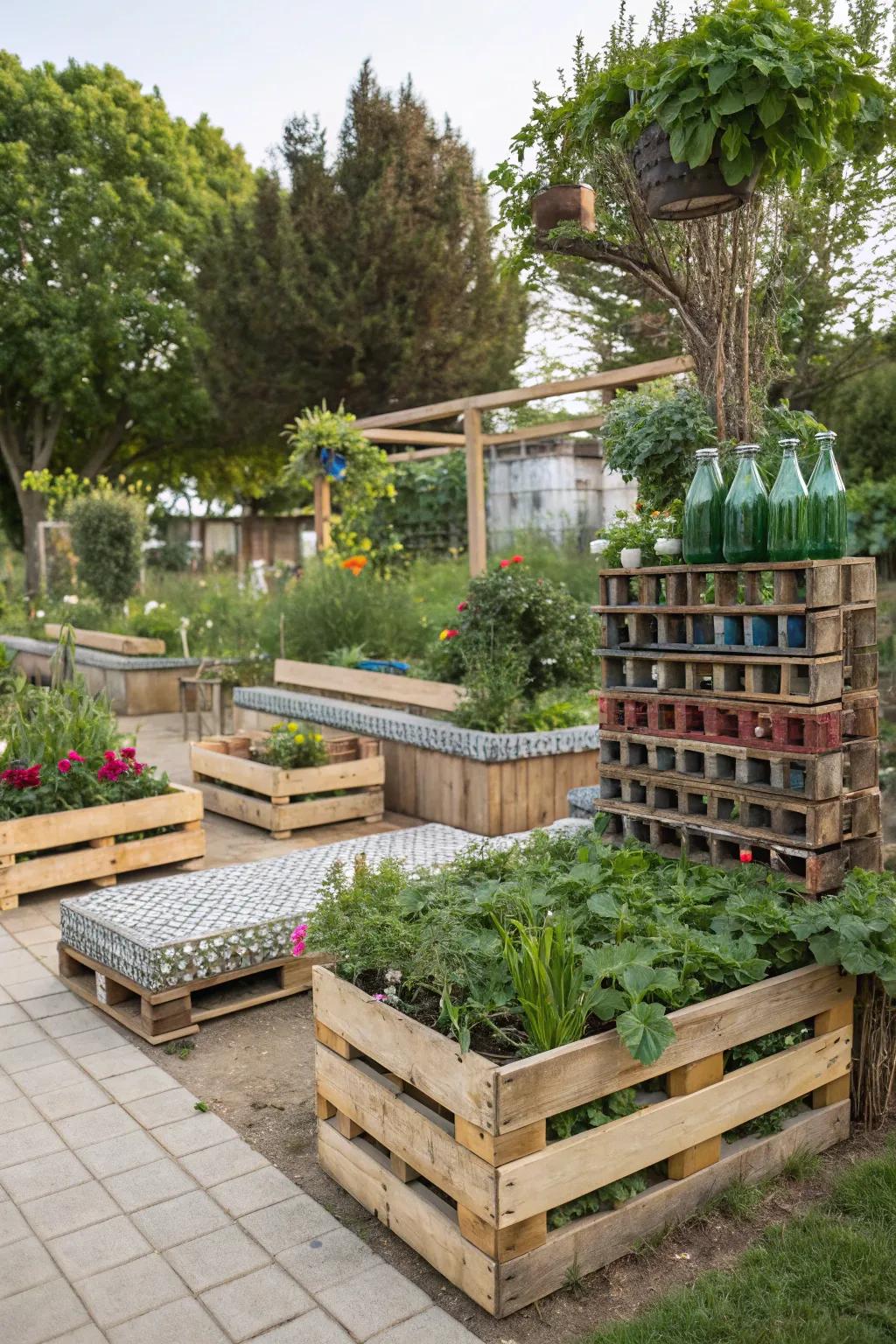
Get creative with recycled materials for garden features. From old pallets to bottles, I’ve found unique ways to upcycle in my garden.
Some ideas to consider:
- Wooden Pallet Planters: Get creative with these wooden pallet planters to enhance your garden with eco-friendly features.
- Recycled Glass Bottles: Add a splash of color to your garden using recycled glass bottles for decoration or irrigation.
- Gardening Tools for Upcycling: Utilize these gardening tools to transform recycled materials into beautiful, functional garden elements.
6. Mulch for Soil Health
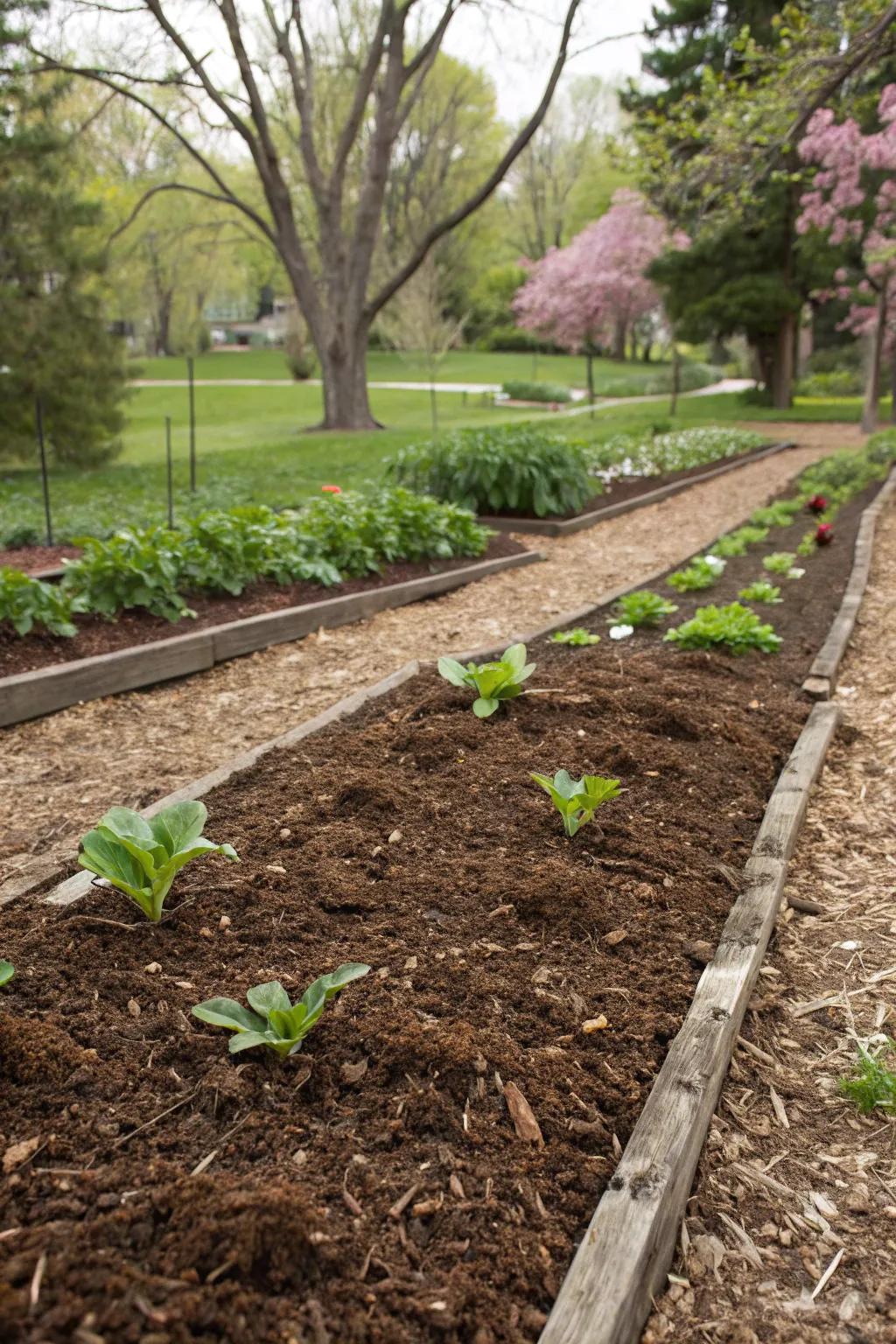
Mulching is my secret weapon for healthy soil and weed control. I often use straw or wood chips to keep my soil in tip-top shape.
Products that could assist:
- Organic Straw Mulch: Enhance your soil’s health and prevent weeds with this natural, eco-friendly straw mulch.
- Natural Wood Chips: Use natural wood chips to enrich your soil while keeping weeds at bay all season.
- Compost Mulch: Boost your garden’s health and nutrition with this beneficial compost mulch.
7. Build a Composting System
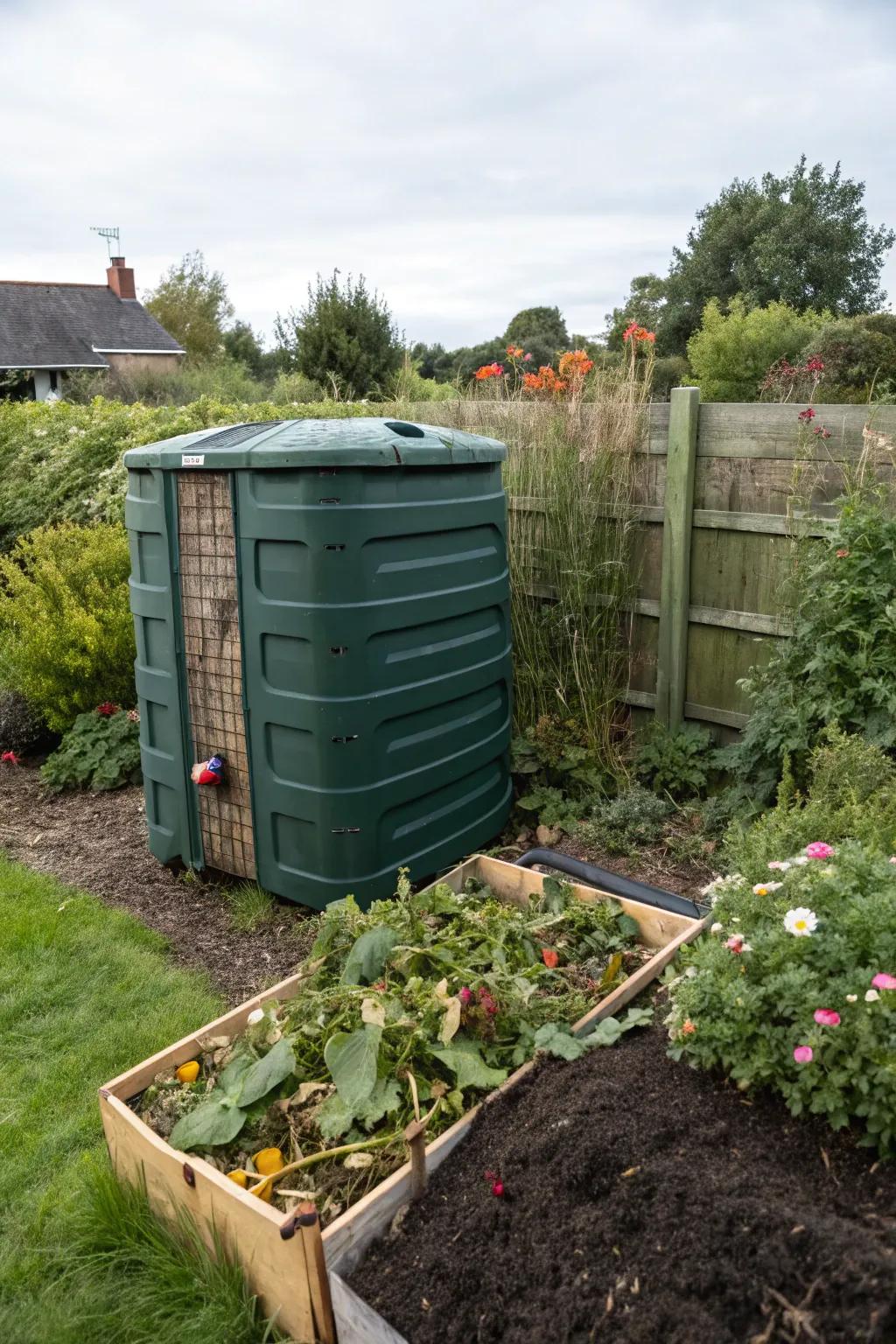
Composting is a fantastic way to recycle kitchen and garden waste. My compost bin is a key player in maintaining soil health.
A few relevant products:
- Outdoor Compost Bin: Start composting efficiently with an outdoor bin; transform kitchen scraps into rich soil.
- Compost Aerator Tool: Boost decomposition with a compost aerator; mix materials for faster composting results.
- Compost Thermometer: Monitor compost temperature effectively to ensure optimal decomposition and healthy soil production.
8. Embrace Vertical Gardening
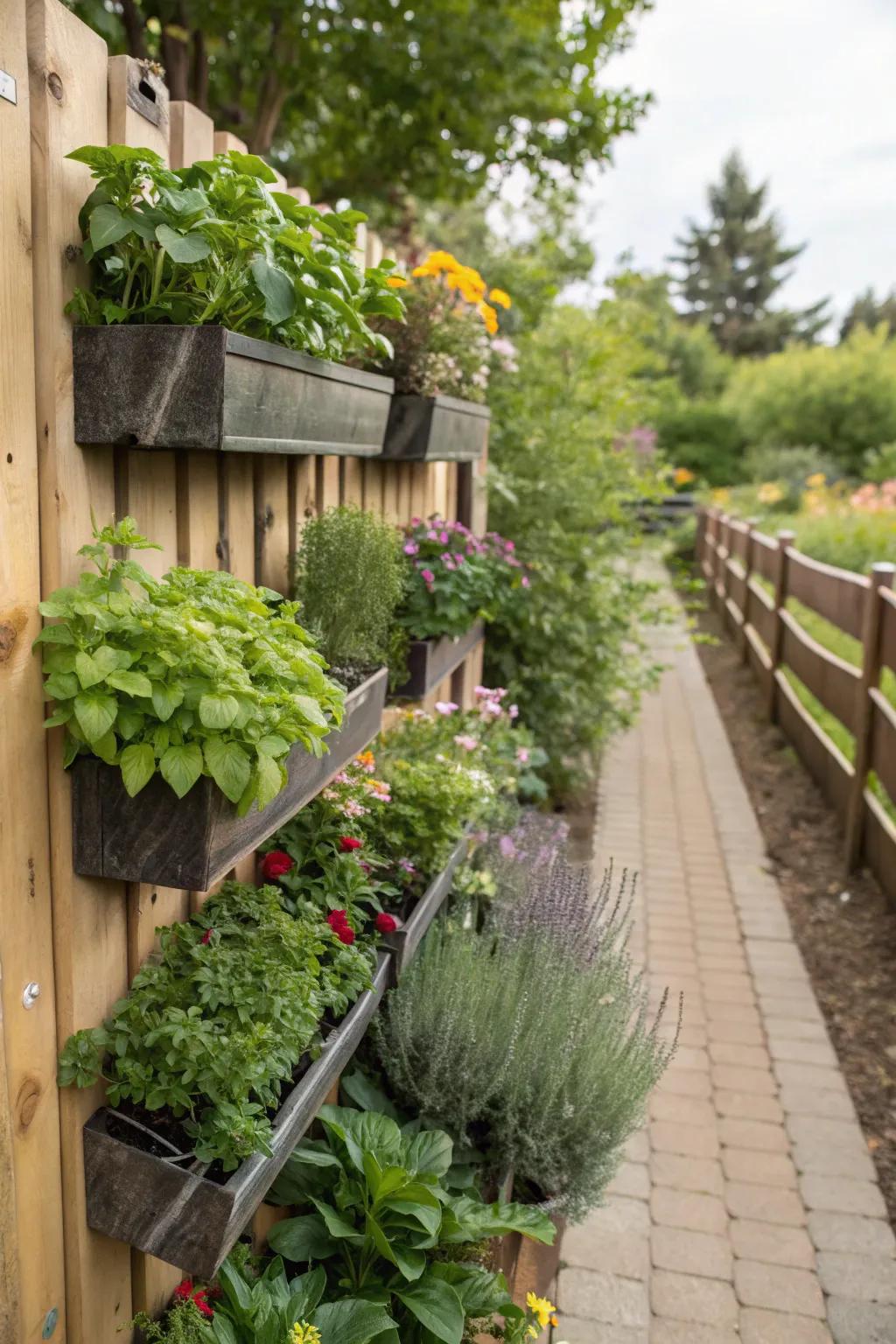
Maximize space by growing vertically with trellises or wall-mounted planters. In my garden, this method has freed up ground space for more crops.
You might like:
- Wall-Mounted Planters: Utilize wall-mounted planters to increase garden space and enhance visual appeal effortlessly.
- Garden Trellis: Incorporate a sturdy trellis to support climbing plants and maximize vertical garden space.
- Vertical Garden Kit: Get a vertical garden kit and start creating beautiful greenery layers with ease.
